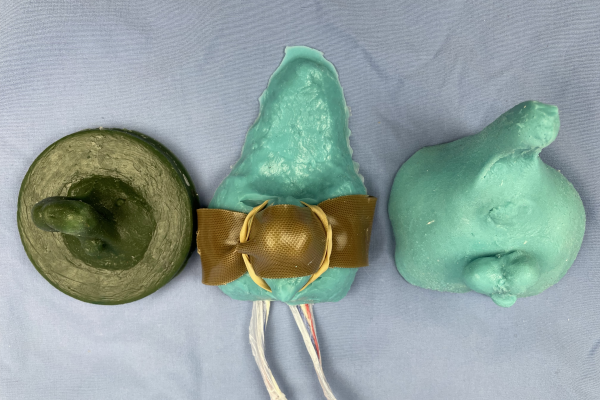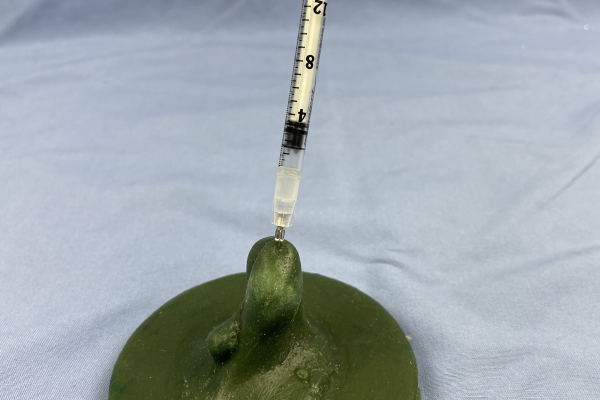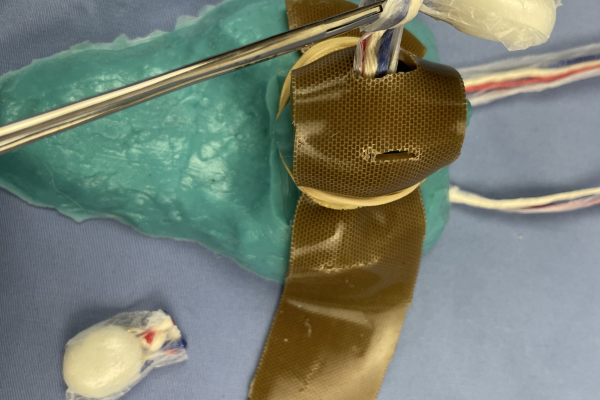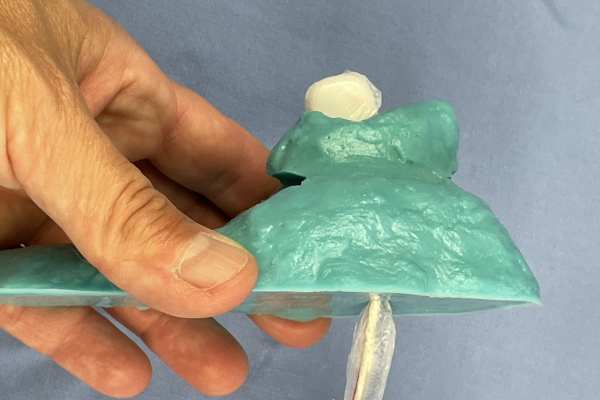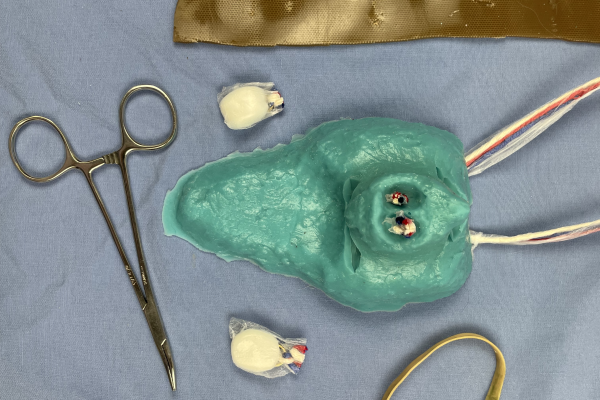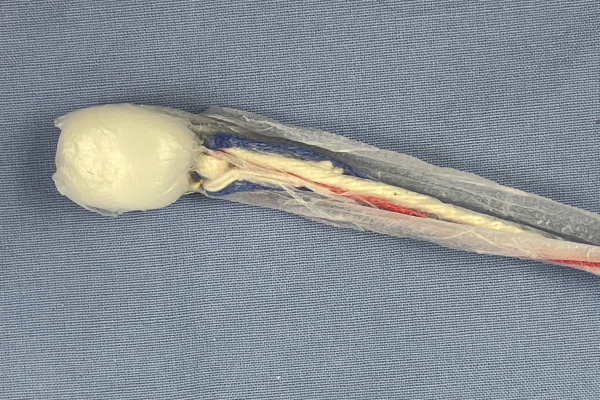The first generation feline castration model consists of two models used in conjunction with one another. The first form first generation model is made from poured silicone with embedded cotton balls in the matrix of the testicles. In this manner one can insert a needle, obtain negative pressure, and inject fluid to provide local anesthesia. This model was also designed to be prepped and draped.
The final form first generation model is also made of poured silicone. It was designed to have easily replaceable testicles, pedicles/serous membranes and skin. The skin is held in place by means of a rubber band. Testicles can either be made as reusable inserts with easily replaceable cords/vasculature or out of foam enclosed within a balloon. The foam inserts can be used for practicing local blocks but have limited utility in that capacity as the balloon ruptures with repeated needle insertion. Flex seal increases durability of the balloon but also effort in construction.
The skin is a thin layer of silicone poured over swimsuit liner, which increases durability and adds texture.
The second generation is in prototype form, and is made from molding the caudal perineal region of an intact male cat. The cast shown is silicone. Future iterations will have a small replaceable scrotum meant for incisions, with easily replaced, injection safe testicles, similar to the first generation model. The second generation will be an all-in-one model that allows the user to surgically prep, drape, inject, incise, neuter & tie off (complete all clinical skills involved in a feline neuter). This same model will eventually be used as a base for a future bladder catheterization model.
"When I dare to be powerful, to use my strength in the service of my vision, then it becomes less and less important whether I am afraid."
Audre Lorde (political activist, author, professor, philosopher)
